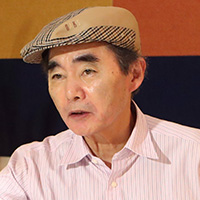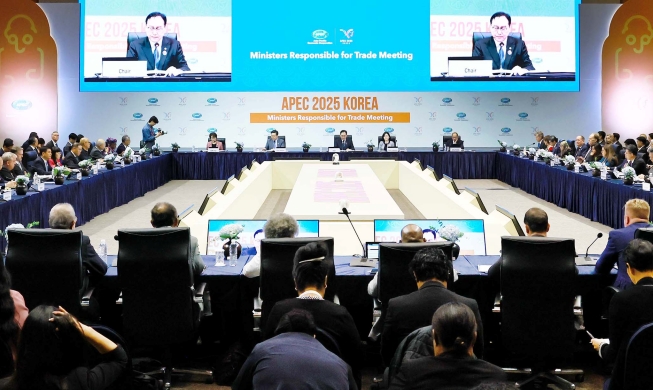
By Norio Kuboi
President of Asia Public History Center
Korean-Japanese fishery zone and Dokdo sovereignty issue
After Korea's liberation from Japan and the setup of the government of the Republic of Korea, both nations needed to forge proper bilateral relations. The Rhee Syngman administration in Seoul thus began negotiations to that end with Tokyo by holding the first preliminary meeting on Oct. 20, 1951. Such talks were halted, however, because Koreans launched protests against their government’s move to normalize bilateral ties without receiving a proper apology from Japan for its colonial rule of the Korean Peninsula. After 14 years, the on-and-off negotiations between the two nations finally came to an end. On June 22, 1965, both sides signed the 1965 Korea-Japan Treaty on Basic Relations.
The treaty at the time comprised the basic treaty, four agreements and an official document for resolving disputes. The latter was exchanged by the two countries in case problems arose when implementing the treaty and agreements. A fisheries agreement was also signed by both sides as part of the treaty, and this requires attention. In January 1952, President Rhee declared Korea's maritime sovereignty rights and set the range of the nation's marine resources in international waters. This line is called the "Rhee Syngman Line" or "Peace Line."
Both countries shared the understanding that they would recognize the line as the interim boundary of a joint fisheries zone between both countries. The issue over which nation owned Dokdo Island, however, emerged as a problem. Then Korean Foreign Minister Chung Il-kwon and his Japanese counterpart Ichiro Kono were probably aware of Korea's de facto control of Dokdo. They reached a secret agreement on the matter with the understanding that the issue "needs resolution later but we will consider it resolved for now.”
Not a single line in the bilateral treaty mentioned Korean sovereignty over Dokdo. But records of related discussions were in the minutes of the meetings and records of the National Diet of Japan, as well as in documents submitted by the government side. Tokyo has kept part of the records confidential, including government records in which the two countries have different views, interpretations or stances, public data or historical records related to the issue. Unlike Japan, however, Korea since 2005 (when the Roh Moo-hyun administration was in power) has opened to the public in Korea most data related to Dokdo, including records of Korea-Japan summits and diplomatic documents.
Korea: we maintained our sovereignty over Dokdo at 1965 summit
Then Vice Foreign Minister Moon Duk-choo told lawmakers at a National Assembly hearing, "We adopted the firm stance that we cannot conclude the Korea-Japan Treaty unless Japan withdraws its demand on the Dokdo issue, and the treaty was later signed only after Japan stopped insisting on its position."
Japan: we did not give up Dokdo. We claim sovereignty
On the contrary, the Japanese government told the Diet that the Dokdo issue was not solved in the bilateral summit despite claiming the island as Japanese territory.
Fishery zone map marks Korean sovereignty over Dokdo
In October 1965, a special committee on the Korea-Japan treaty of Japan's House of Representatives held a hearing on sovereignty over Dokdo vis-à-vis its relations to territorial waters and an exclusive fishing zone. On a news report saying Korea will set up an exclusive fishing zone in 12 nautical zones surrounding the island, the committee said, "The Japanese government is aware that an exclusive fishing zone cannot be set up unless the two concerned parties agree to it. Japan's strong position is that Takeshima is Japanese territory." Takeshima is what the Japanese government calls Dokdo.
A committee member added, "Of course, Japan cannot consider the possibility of Korea setting up an exclusive fishing zone around Takeshima." Yet given how Japan in the past accepted Korea's effective control over Dokdo, however, related data confirms the existence of Korea's zone.
On a Japanese government map related to the bilateral fisheries agreement issued on Oct. 28, 1965, which remains confidential to the Japanese public, Taekshima is marked as being within the exclusive fishing zone. Though the map does not specify that the zone belongs to Korea, the zone is marked in red just like Korea's fishing zones in other areas. Japan’s exclusive fishing zone around Tsushima Island is marked in blue. Based on such data, historical records prove the validity of Korea's zone on Dokdo as cited by the Korean government to the National Assembly in Seoul.
Norio Kuboi taught history at the high school level and at Momoyama Gakuin University, He is now chairman of the Territorial Education Research Association and the Group for Rethinking Takeshima Day. His book "The Truth Behind Dokdo" was published in Korea in 2017.
Translated by Korea.net staff writer Yoon Sojung.
